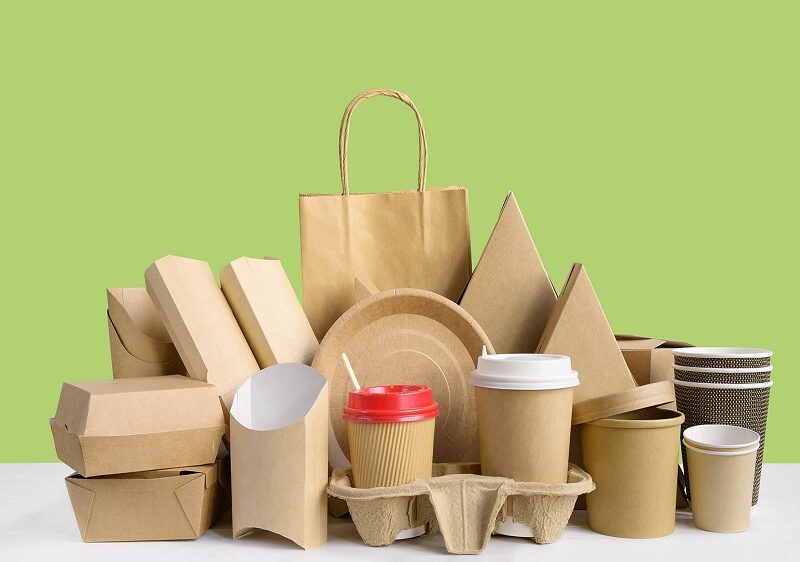Whether it’s in your shopping cart, your cabinets, your delivery, or somewhere else, you’re certain to encounter some kind of packaging. Environmental issues, such as pollution, might be exacerbated by this quantity of plastic and other artificial materials. Nevertheless, a decision torder eco friendly
So, Why Can’t One Just Use Regular Packaging?
Define environmentally friendly packaging.
Eco-friendly packaging’s positive effects on the planet
The Economic Value of Eco-Friendly Packaging
What’s the Deal with Regular Boxes?
Product packaging’s principal function is to keep items safe until they’re ready to be used. Packaging decisions, particularly for perishable goods and ready-to-eat foods, are now almost always made with portability in mind. Plastic, namely polyethylene, is often used for the packaging we come across. Many varieties exist:
Polyethylene terephthalate is widely used in the beverage container industry. In terms of volume recycled, it dominates all other plastic resins.
Containers made of high-density polyethylene can hold more weight and more liquid, making them suitable for transporting products like laundry detergent, shampoo, and motor oil.
Polyethylene terephthalate is a kind of low-density polyethylene that is made into plastic bags and films because of its flexibility. Unfortunately, there is a lack of recycling options for this particular plastic.
Even the clothing we purchase might be encased in one of these plastics if it is brought to us in a plastic bag or comes in a plastic box.
Along with its practicality, plastic is also often believed to be recyclable. What about recycling? Seventy per cent of recyclable plastics in the Middle East are either not recycled or end up in landfills or the ocean.
The production of ecologically unfriendly packaging is another problem it creates. Most plastic is made by processing crude oil, and both the manufacturing process and the natural breakdown of plastic are damaging. Degradation of plastics may unleash hormone-disrupting chemicals like bisphenol A, which can stay in the environment for centuries.
And you may be wondering, “What about paper and cardboard? These must be organic and safe for the environment, right? It’s a difficult answer. Although paper and cardboard are produced from renewable resources, this does not make them a sustainable choice for packaging. The pulp and paper sector consumes forty percent of all internationally marketed wood. To put it another way, that’s around 7.5 million acres of woods.
For solutions to these problems, let’s order eco friendly takeaway containers.
- Define environmentally friendly packaging.
To define what constitutes sustainable or environmentally friendly packaging, the Sustainable Packaging Coalition has established a variety of criteria.
- Beneficial, risk-free, and healthy for people and communities at every stage of development and use.
- Maintains competitive pricing and performance.
- Renewable energy used at every stage of production, including extraction, manufacturing, transport, and recycling.
- Maximizes the use of sustainable or secondary materials.
- Is made utilizing green methods and tools for manufacturing.
- Consists of components that do not release hazardous substances at any point in the product’s life cycle.
- Aims to make the most efficient use of resources and power.
- Reclaimed and put to good use in self-sustaining biological and/or industrial cycles.
It should be biodegradable, recyclable, and manufactured from environmentally friendly materials.
Eco-friendly packaging’s positive effects on the planet
Cuts Down on CO2 Emissions
You may lessen the environmental impact of your packaging by making a decision to buy disposable food packaging products in dubai. In a similar vein, when carbon dioxide is released into the atmosphere, the development of natural materials like bamboo or approved paper or cardboard removes it. Using environmentally friendly packaging is a great first step in reaching carbon neutrality for your company.
Biodegradable
The packaging is biodegradable if it is manufactured from natural materials. Plastic takes hundreds to thousands of years to biodegrade and in the meanwhile, it releases toxic compounds. Composting is an option for certain eco-friendly packaging options, such as sustainable paper goods.
Simply Disposable
Organizations and institutions in the asia and middle east often have designated recycling or disposal sites or services. Separating your disposables into their respective bins makes recycling a breeze nowadays.
Hazardous Substances
Most plastic is made from crude oil, which is extracted, refined, distributed, used, and discarded in ways that are very damaging to the environment. Environmentally friendly packaging does not degrade or cause harm in any of these ways. When properly biodegraded, it does not release any of the toxic compounds that plastic does.
Simple to Recycle or Reuse
The capacity to recycle or reuse the packaging is an important aspect of environmentally responsible packaging. Packaging that is reused has a less environmental impact since its useful life is prolonged. If the packaging is sturdy enough, it may be recycled and used again for other purposes.
Environmentally friendly packaging and its advantages for your company.
Sustainable packaging has several uses.
Eco-friendly packaging may be used in any market. There is an environmentally friendly packaging option available for just about every product, whether it be food, clothes, cosmetics, or technology.
Your company’s reputation will rise as a result.
Building a reputation as an eco-friendly business earns you credibility with your clientele. Sustainable product trends are growing in popularity. Sustainability, for instance, is a major trend in the fashion business.
There have also been suggestions for the establishment of certificates to enable the sustainable marketing of fashion goods. If you have a cutting-edge mindset, your company will always be ahead of the curve in terms of innovation and consumer pleasure.
Transport expenses may be lowered as a result.
Less packing may be required if it is of higher quality and less harmful to the environment. As a result, transportation expenses will be reduced generally.
Beneficial in Growing Your Business by Attracting New Clients
Ninety percent of CEOs agree that sustainability is critical to enterprise growth. Customers are increasingly seeking for brands that are committed to sustainability, both in their operations and their values. In today’s economy, it’s crucial for companies of all sizes to prioritize long-term viability.
Conclusion
It may be time-consuming to develop, design, and locate environmentally friendly packaging materials, particularly if you are unsure of what you need.
Article has put together a comprehensive packaging guide that will walk you through the entire process so you can make an informed decision. Many kinds of packaging, design advice, artwork prep, prototypes, manufacturing, and plenty more are all covered in this comprehensive manual.

